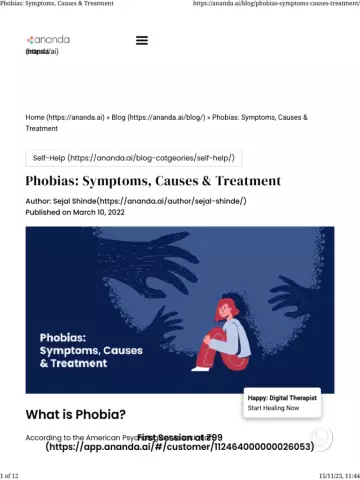- Author Rachel Wainwright [email protected].
- Public 2023-12-15 07:39.
- Last modified 2025-11-02 20:14.
Sepsis
General information about the disease

Blood poisoning (sepsis) is an acute or chronic disease that occurs as a result of the penetration of bacterial, viral or fungal flora into the body. Many people believe that blood sepsis develops after suppuration of severe wounds, however, in reality there are many other "gates" through which the infection can enter the circulatory system, and very often it turns out that the true causes of the disease cannot be found out.
The main danger of sepsis is that it can proceed very quickly, sometimes with lightning speed. In practice, sepsis, the treatment of which was started too late, often leads to the death of a person within a few hours after the first symptoms appear. Of course, such consequences cause great concern in the scientific community, and that is why hundreds of researchers from around the world are working to find new methods that would allow timely detection of sepsis in children and adults, and would minimize the development of serious complications.
Etiology of the disease
A variety of microorganisms act as causative agents of sepsis: staphylococci, meningococci, pneumococci, Escherichia coli, Mycobacterium tuberculosis, Klebsiella, Candida-type fungi, viruses of the herpetimorphic group. It is worth noting that the development of sepsis is associated not so much with the properties of the pathogens themselves, but with the state of the human body and its immunity. Reducing the effectiveness of protective barriers leads to the fact that our security systems are no longer able to localize harmful pathogens in time and even more so to prevent their penetration into various organs.
If we talk about the most common ways of contracting sepsis, then it is worth noting that they depend on the type of specific pathogen. Each of them has its own characteristics and epidemiological prerequisites. There are only cases when patients develop nosocomial sepsis, the symptoms of which sometimes make themselves felt even after inhalation of poorly purified air in the wards (in 60% of samples, potentially dangerous microorganisms are detected). You can also identify other ways of infection that determine the main symptoms of sepsis:
- percutaneous sepsis;
- oral;
- obstetric and gynecological;
- otogenic;
- cryptogenic;
- blood poisoning resulting from surgical and diagnostic procedures.
Identifying the “gateway” through which sepsis has penetrated is critical to successful patient management. Early diagnosis of sepsis allows timely identification of the infection, separating it from cases of short-term presence of microbes in the blood and activating the body's defense systems.
As we said above, for the development of sepsis, certain conditions must be met, in particular:
- the presence of a primary focus (it must be associated with the circulatory system or lymphatic vessels);
- repeated penetration of pathogens into the blood;
- the formation of secondary foci, which in the future also supply pathogens;
- the inability of the body to organize the necessary immune defense and provoke reactions against harmful microbes.
Only if all these conditions are met and the patient has appropriate clinical signs of infection, doctors diagnose blood sepsis. The development of sepsis is provoked by serious illnesses (diabetes, cancers, rickets, HIV, congenital defects of the immune system), therapeutic measures, trauma, prolonged use of immunosuppressive drugs, X-ray therapy and some other factors.
Sepsis symptoms
The complaints of patients are very diverse, but the main attention should be paid to the following symptoms of sepsis:
- severe chills;
- increased body temperature;
- changes in the patient's mental state (euphoria or, conversely, apathy);
- tired, blank look;
- pallor of the skin;
- sunken cheeks;
- hyperemia of the face;
- profuse sweating;
- petechial hemorrhages in the form of stripes and spots on the surface of the forearms and legs.
In addition, sepsis can be manifested by herpes on the lips, bleeding of the mucous membranes of the oral cavity, difficulty breathing, the appearance of seals and pustules on the skin. Despite the abundance of sepsis symptoms, fever, chills and sweating remain the main signs by which blood sepsis can be detected. Chills correspond to the massive release of toxins from the foci of inflammation into the blood, after which the patient's temperature always rises and profuse sweat appears. Often, people are forced to change their underwear several times a day, which is literally soaked in sweat. Note that if there is any suspicion of sepsis, treatment should be started as soon as possible, since the infection is extremely dangerous and can be fatal.
Diagnosis of sepsis
When diagnosing sepsis in patients, blood samples are taken from the focus of inflammation. In the future, they try to isolate the pathogen from the samples taken, and this requires multiple inoculations and long incubation. Many factors influence the success of this procedure. In particular, doctors often receive negative results due to previous antimicrobial therapy or due to a slow increase in the number of pathogens. To avoid incorrect conclusions, blood tests should be confirmed by bacteriological studies of materials and a thorough examination of rashes on the skin and mucous membranes.
Sepsis treatment

Effective treatment of sepsis is one of the most important tasks of modern medicine. In fact, it is no different from the treatment of other infectious processes, but at the same time, doctors must take into account the high risk of death and the development of serious complications. The following activities are at the forefront:
- fight against intoxication;
- counteraction to harmful microflora;
- stimulation of the body's immunobiological reserves;
- correction of violations in the work of vital systems and organs;
- symptomatic treatment.
Patients with sepsis are prescribed a diet and complete rest is recommended. The state of the focus of inflammation is constantly monitored for the timely prevention of acute reactions. Patients are given large doses of antibiotics, and in severe cases, corticosteroids. Also, patients with sepsis are given a blood plasma transfusion, gamma globulin and glucose are administered. With the development of dysbiosis and other undesirable effects, symptomatic agents are taken. If there is no improvement in the condition, doctors consider surgical treatment. In some cases, it is really necessary, because if specialists hesitate for too long, sepsis in children and adults can be fatal. Surgical intervention includes: opening abscesses, ligation of veins for thrombophlebitis, amputation of limbs and other similar measures.
Sepsis of newborns
The incidence of sepsis in newborns is 1-8 cases per 1000. Mortality is quite high (13-50%), therefore, if there is any suspicion of sepsis, treatment and diagnosis should be carried out as soon as possible. Premature babies are at particular risk, since in their case the disease can develop with lightning speed due to weakened immunity.
Sepsis enters the child's body in different ways. Early forms of sepsis are usually attributed to transplacental penetration and hematogenous infection or contact with infected vaginal flora during childbirth. Late sepsis of newborns is also associated with infection with vaginal microflora, but for a number of unclear reasons, it manifests itself much later (at 2-3 weeks of life). It is possible to activate the nosocomial form of the disease, when pathogens enter the blood as a result of non-compliance with sanitary and hygienic rules or the concomitant development of serious illnesses.
Treatment of neonatal sepsis takes into account the age of the patient and is carried out only under the supervision of experienced specialists who determine the set of drugs and procedures necessary to keep the child alive.
YouTube video related to the article:
The information is generalized and provided for informational purposes only. At the first sign of illness, see your doctor. Self-medication is hazardous to health!






